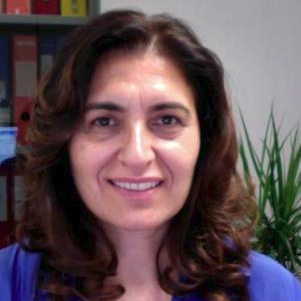Membrane Contactor
A special issue of Membranes (ISSN 2077-0375).
Deadline for manuscript submissions: closed (28 February 2019)
Special Issue Editors
Interests: membrane design; membrane fabrication; membrane-based separation processes; high-throughput techniques; industry oriented applications
Special Issues, Collections and Topics in MDPI journals
Interests: membrane science and bioengineering; development of biohybrid and bioinspired membranes selective at molecular level; biocatalysis with membranes; biocatalytic membrane reactors and bioreactors; integrated membrane processes for bioseparations and bioconversions; wastewater treatment and recovery of added value components; application of membrane operations in biotechnology, nanomedicine, pharmaceutical, food, biorefinery
Special Issues, Collections and Topics in MDPI journals
Special Issue Information
Dear Colleagues,
In the last decades, membrane contactor systems have been studied extensively as an alternative way of contacting of two different phases (gas-liquid or liquid-liquid). In most cases, the membrane plays a role of well-defined interface that provides greater surface area and independent operation of two streams separated by a membrane. By adjustment of membrane and module design (e.g., flat-sheet or hollow fiber), it is possible to achieve several times higher overall mass transfer characteristics per volume, leading to a significant reduction of unit size in comparison with traditional packed columns.
Different configurations of membrane distillation are one of the classical examples of membrane contactor systems (L-G, L-G-L) used for water desalination and related applications. Despite the pressure-driven processes (e.g., nanofiltration or reverse osmosis), membrane contactors can be successfully used not only to split the feed to diluted and concentrated streams but also to isolate individual components from its solution (membrane crystallization). By combining advantages of membranes and absorption process, membrane contactors can be used for selective removal of various gases (CO2, H2S, olefines, etc.), organics and water vapors due to specific interactions with the absorption liquids. L-L membrane contactors can also be used for varied applications – for example, emulsification, pertraction processes or controlled dosage of chemicals.
The membrane is usually acting as porous, non-selective interface; however, the membrane can also have a non-porous selective layer like in thermopervaporation process. The ideal membrane for membrane contactors shall have non-wetting surface towards at least one of the liquid phase, narrow pore size distribution, and low latent heat conductivity for some application. Besides, the membrane can have additional functions such as catalytic one (membrane catalysis). Then, the catalytic membrane can facilitate the chemical reaction on the interface between two phases, or combine the chemical transformation with the selective evacuation of the product that allows shifting the chemical reaction.
This special issue covers the recent trends in the area of membrane contactors, including both fundamental and applied research on the development of novel membranes, processes and description of heat/mass transfer.
Dr. Alexey Volkov
Dr. Lidietta Giorno
Guest Editors
Manuscript Submission Information
Manuscripts should be submitted online at www.mdpi.com by registering and logging in to this website. Once you are registered, click here to go to the submission form. Manuscripts can be submitted until the deadline. All submissions that pass pre-check are peer-reviewed. Accepted papers will be published continuously in the journal (as soon as accepted) and will be listed together on the special issue website. Research articles, review articles as well as short communications are invited. For planned papers, a title and short abstract (about 100 words) can be sent to the Editorial Office for announcement on this website.
Submitted manuscripts should not have been published previously, nor be under consideration for publication elsewhere (except conference proceedings papers). All manuscripts are thoroughly refereed through a single-blind peer-review process. A guide for authors and other relevant information for submission of manuscripts is available on the Instructions for Authors page. Membranes is an international peer-reviewed open access monthly journal published by MDPI.
Please visit the Instructions for Authors page before submitting a manuscript. The Article Processing Charge (APC) for publication in this open access journal is 2700 CHF (Swiss Francs). Submitted papers should be well formatted and use good English. Authors may use MDPI's English editing service prior to publication or during author revisions.
Keywords
- gas-liquid membrane contactor
- liquid-liquid membrane contactor
- membrane distillation
- membrane emulsification
- membrane crystallization
- membrane catalysis
- gas treatment
- mass/heat transfer
- membrane fabrication for contactor application







